#Vélez-Blanco
Photo

Vélez-Blanco, Almeria.
34 notes
·
View notes
Text




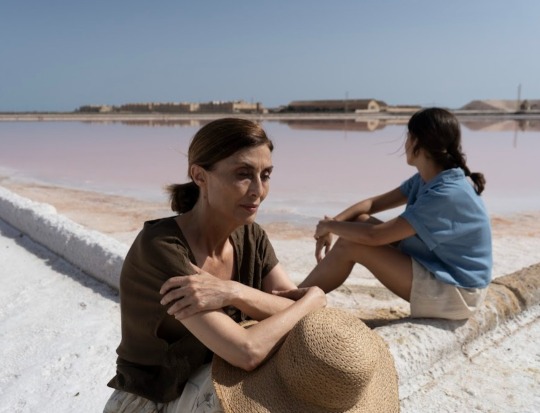




Drama "intimista y generacional" que se narra desde el punto de vista de tres personajes femeninos (una madre y dos hermanas), la historia, escrita por el propio Viruega, recoge algunos de los temas que atraviesan su filmografía: la complejidad de las relaciones paterno-filiales, la vuelta al hogar, los fantasmas de la infancia y los surcos invisibles que el paisaje de la niñez deja en el alma.
En 'Amanece', dirigida por el almeriense Juan Francisco Viruega, donde el "hipnótico paisaje" de Almería se fundirá con las "emociones de sus protagonistas", un viaje al sur(este) del país enciende la mecha de una historia en la que "la complejidad de la naturaleza humana y la decadencia del amor", apuntan desde la producción, dialogarán con "paisajes de la tradición cinematográfica" del Desierto de Tabernas.
Si en el cortometraje 'Postales desde la luna' eran dos hermanos los que regresaban al hogar familiar, aquí es una pareja, Alba y Martín, la que emprenderá una "huida hacia delante" tras el punto de inflexión que en su relación supondrá el hallazgo de un cortijo aislado en mitad del desierto poblado por muebles y objetos en venta, "reliquias pertenecientes a relaciones rotas" que transmiten "la nostalgia por un sentimiento ya agotado".
La película, cuyo el diseño del título se juega con una pita y un sol sobre la segunda a que dibuja una suerte de indalo, mostrará al espectador una "pequeña radiografía" de las relaciones sentimentales en la actualidad, que tras "completar las primeras etapas del ciclo natural de una pareja" parecen condenadas a estancarse, "por la carencia de proyectos en común, por la dictadura del deseo capitalistas o por la inseguridad como fruto de las carencias afectivas durante la infancia".
Reparto: Aura Garrido, Iria del Río, Isabel Ampudia, Rebeca Sala, Antonio Araque, Sebastián Haro, Rafa Jiménez y Antonio Gómiz.
El rodaje terminó el pasado mes de junio, y se realizó íntegramente en escenarios en la provincia de Almería, algunos rincones del Parque Natural Cabo de Gata-Níjar, como la playa de Los Escullos, La Isleta del Moro, Aguadulce, Roquetas de Mar (localidad natal del director), el Arrecife de las Sirenas, las balsas de sal de Las Salinas, la playa de las Amoladeras, la playa de Torregarcia, el desierto de Tabernas, el rancho Malcamino’s, la Casa Rosa de Rioja, Gérgal, Nacimiento y Vélez-Blanco.
#amanece#películas#almería#aura garrido#iria del río#isabel ampudia#antonio araque#rafa jiménez#juan francisco viruega#rebeca salas#sebastián haro#antonio gómiz#andalucía#cine#cabo de gata níjar#desierto de Tabernas#vélez-blanco#roquetas de mar#la isleta del moro#arrecife de las sirenas#nacimiento#gérgal#las salinas#playa de torregarcía#los escullos#playa de las amoladeras#parque natural cabo de gata níjar#rodaje#cabo de gata#aguadulce
4 notes
·
View notes
Text





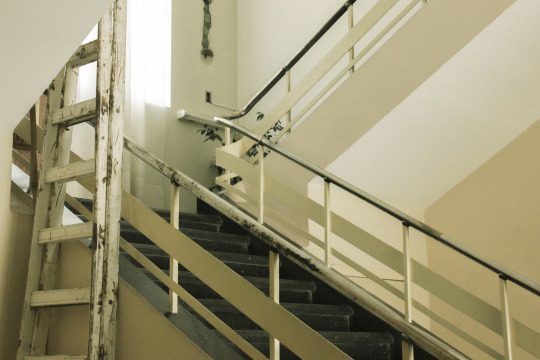
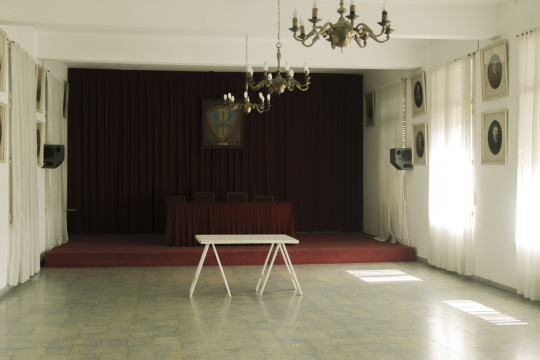

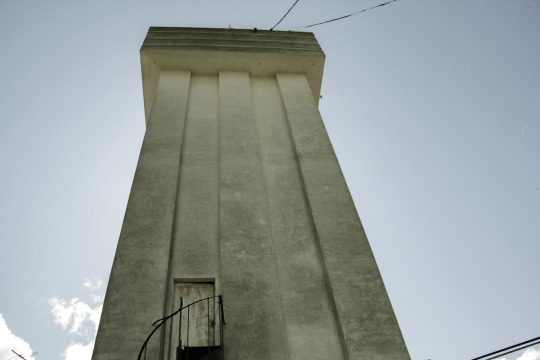

Ah, Salamone… Mi padre trabajó en la construcción de la municipalidad. Era un pibe, tendría unos quince años en ese entonces. Y resulta que llamaban gente joven para trabajar haciendo los mosaicos para los pisos; eran épocas difíciles —bueno, siempre son épocas difíciles acá en Argentina— y muchos acudían porque era una oportunidad para tener trabajo y ganar un dinero para la familia. En Moreno y Díaz Vélez, acá nomás a la vuelta de la Municipalidad, estaba el hotel de Fernando Othar. Justo en la esquina estaba el bar de Francisco González, que era muy concurrido en esa época, allá por fines del 30. Entonces estaba el bar, luego el
hotel, y ahí, pegada al hotel, estaba la cancha de pelota paleta abierta, porque acá había muchas familias vascas, va a notar usted en los apellidos que hay muchos vascos en Rauch. Bueno, en esa cancha de pelota paleta se hicieron los mosaicos para la Municipalidad, imagino que lo eligieron porque era un terreno amplio, quedaba cerca de la obra y les dieron permiso.
A mi padre le gustaba contar cómo se hacían esos mosaicos. Trituraban restos de mármol y granito, luego preparaban la mezcla de cemento con algunos pigmentos, porque Salamone tenía su propio criterio para el uso de los colores en
el piso, y eso está en casi todas las obras, más o menos así: el negro para las escaleras y el hall de entrada, el amarillo para los espacios de circulación —los pasillos de la municipalidad de acá tienen pisos amarillos—, el verde para la recepción y los lugares de trabajo: el Concejo Deliberante, el Salón Blanco, las oficinas. Para las baldosas negras, se usaba el picado de los mármoles más bien blancos; los de distintos colores —en general marrones, ámbar y verdes— se dejaban para los pisos amarillos y verdes. Todo eso se mezclaba, se ponía en los moldes, se prensaba, se dejaba secar, se desmoldaba. Y, luego de colocadas las baldosas, se pulían, claro.
Eso les daba un brillo que hacía que no fuera necesario encerarlos ni nada de eso.
Si usted anda por el edificio, va a ver que están en muy buenas condiciones, y eso que ya tienen más de 80 años y mucha gente circula por esos lugares.
📕 Patricia Ratto / Ruta Salamone. Ediciones bonarenses, 2023,
45 notes
·
View notes
Text
Almería-Andalucía-España
Recostado en las laderas de la Sierra de María, en la comarca almeriense de los Vélez encontramos el pueblo de Vélez Blanco

#Almería-Andalucía-España#¿Esta es la imagen y algunos datos (O no) la “Historia” la pones tú? ¡La tuya! ¿Lo harás...?
2 notes
·
View notes
Text
My favorite genre of usa museums are those who've straight up brought entire random buildings from idk spain piece by piece and it's all just sitting there in a room

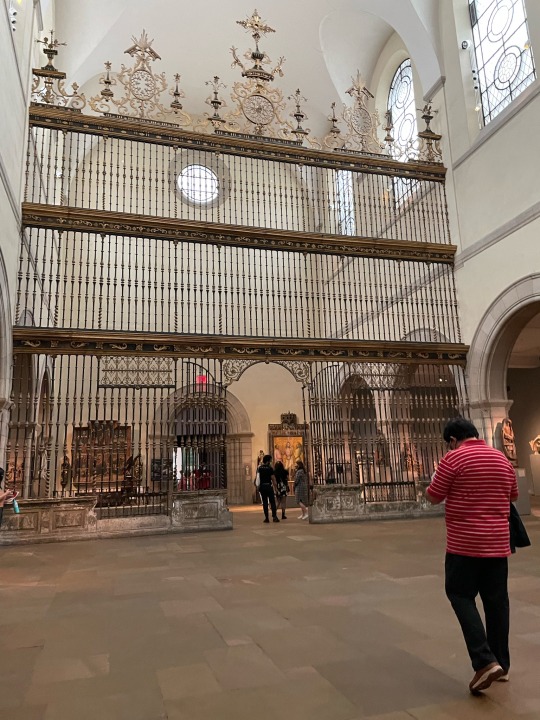
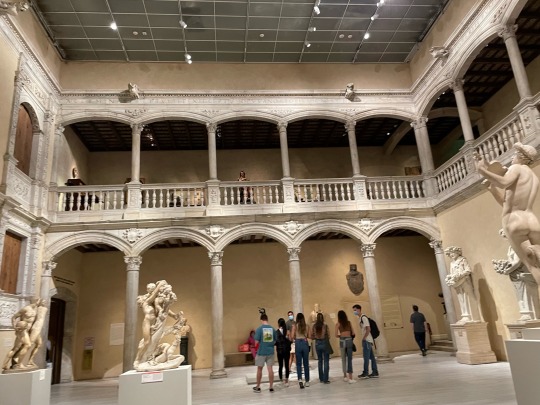
[Fuentidueña apse, c. 1200-1210 - Choir screen from the Cathedral of Valladolid, 1763 - The patio of Vélez Blanco palace, 1510]
Props to my entrepreneurial compatriotas in like 1910 who wondered what shit they could sell to an oil baron for a quick buck
#usa museu- the met. i mean the met#i think met cloisters is incredibly bad when it comes to this-- like it's a great museum but#as someone on tripadvisor put it#it's a pastiche of random chunks of buildings from literally all over western europe glued together#in a sort of disneyland (albeit still tasteful) Ye Olde Medieval Faire version#of what most europeans will already have seen For Real. In Their Town.#i think it's great for americans if they want to get a taste but at the same time [shrek side eye meme]#my posts
22 notes
·
View notes
Text
Vélez-Blanco, conoce este pueblo almeriense
La localidad de Vélez-Blanco se encuentra al norte de la provincia de Almería, lindando con Murcia y en la comarca... http://dlvr.it/T5KXZY
0 notes
Text
Este Festival de la Rhythm of the World Foundation se realizará en el auditorio de la Randall University, en la ciudad de Oklahoma, Estados Unidos, evento internacional creado por la bailarina zuliana Yelisabel Villarreal Scott, cuyo nombre artístico es Marjan Esáa.
Alexis Blanco
La edición 2024 del Festival Ritmos del Mundo, de la Rhythm of the World Foundation se realizará el sábado 24 de febrero, en el auditorio de la Randall University, localizado en la ciudad de Oklahoma, en los Estados Unidos, un evento internacional creado por la bailarina zuliana Yelisabel Villarreal Scott, cuyo nombre artístico es Marjan Esáa.
El año pasado, también en exclusiva, Noticia Al Día reseñó este importante evento cultural que esta vez arriba a su edición número once, consolidando su prestigio como un encuentro extraordinario de artistas de distintas partes del planeta y que están radicados en USA. Este año elpepazo.com también lo reseña.
Marjan Esáa es hija dilecta del maestro polímata zuliano Yehoshua Villarreal, y sin duda ha heredado las facultades de su padre para intervenir como intérprete distintas disciplinas de la creación estética.
Marjan Esáa recordaba que Ritmos del Mundo es una regia celebración en la que baile, música, alma y alegría convergen para irradiar una importante señal de confraternidad, esperanza y júbilo de paz, desde el medio oeste norteamericano. “…Mi misión es seguir promoviendo la diversidad cultural a través de la danza y la música, así como también a los talentosos artistas de este gran estado”.
Una fiesta global que se circunscribe muy bien, según advertimos, al sentido de las palabras del Papa Francisco en su encíclica Fratelli Tutti: “Reconocer a cada ser humano como un hermano o una hermana y buscar una amistad social que integre a todos no son meras utopías. Exigen la decisión y la capacidad para encontrar los caminos eficaces que las hagan realmente posibles.
Cualquier empeño en esta línea se convierte en un ejercicio supremo de la caridad. Porque un individuo puede ayudar a una persona necesitada, pero cuando se une a otros para generar procesos sociales de fraternidad y de justicia para todos, entra en el campo de la más amplia caridad, la caridad política”.
En escena estarán entregando su esencia estética los artistas de las instituciones, mencionadas por sus nombres en inglés: Candela Latin Dancers from Clips 'N Hips, Marjan & Mystical Hips, Norahua, Halau Hula ‘O Nani, Nritya Arpan School of Dance, Everything Goes Dance Studio, the dancers of Classen SAS at Northeast.
Alexis Blanco
(El crédito de todas las fotos es de César "El Flaco" Vélez)
Para recibir en tu celular esta y otras informaciones, únete a nuestras redes sociales, síguenos en Instagram, Twitter y Facebook como @DiarioElPepazo
El Pepazo
0 notes
Text

VKM Reformas Almería
VKM Reformas está formado por un cluster de Estudios de Arquitectura, Interiorismo y Empresas de Reformas con equipos de Arquitectos, Interioristas y Reformistas profesionales en Rehabilitación y Reformas de Viviendas para Particulares en Almería
Visita nuestra web:
https://www.vkmreformasalmeria.es
Ofrecemos servicios en:
Abla, Abrucena, Adra, Albánchez, Alboloduy, Albox, Alcolea, Alcóntar, Alcudia de Monteagud, Alhabia, Alhama de Almería, Alicún, Almería, Almócita, Alsodux, Antas, Arboleas, Armuña de Almanzora, Bacares, Balanegra, Bayárcal, Bayarque, Bédar, Beires, Benahadux, Benitagla, Benizalón, Bentarique,, Berja, Canjáyar, Cantoria, Carboneras, Castro de Filabres, Chercos, Chirivel, Cóbdar, Cuevas de Almanzora, Dalías, Darrícal, El Ejido, Enix, Felix, Fiñana, Fines, Fondón, Gádor, Garrucha, Gérgal, Huécija, Huércal de Almería, Huércal-Overa, Íllar Instinción, La Mojonera, Laroya, Las Tres Villas, Laujar de Andarax, Líjar, Los Gallardos, Lubrín, Lucainena de las Torres, Lúcar, Macael, María, Mojácar, Nacimiento, Níjar, Ohanes, Olula de Castro, Olula del Río, Oria, Padules, Partaloa, Paterna del Río, Pechina, Pulpí, Purchena, Rágol, Rioja, Roquetas de Mar, Santa Cruz de Marchena, Santa Fe de Mondújar, Senés, Serón, Sierro, Somontín, Sorbas, Suflí, Tabernas, Taberno, Tahal, Terque, Tíjola, Turre, Turrillas, Uleila del Campo, Urrácal, Velefique, Vélez-Blanco, Vélez-Rubio, Vera, Viator, Vícar, Zurgena.
0 notes
Text

VKS Organizadores Eventos Almería
VKS Organizadores Eventos está formado por un cluster de Agencias Organizadoras de Eventos con equipos de Organizadores de Eventos especialistas en Organización de Eventos para cualquier tipo de entidades, ferias, congresos, sociedades, empresas, convenciones, asociaciones, pymes y negocios en Almería
Visita nuestra web:
https://www.vksorganizadoreseventosalmeria.es
Ofrecemos servicios en:
Abla, Abrucena, Adra, Albánchez, Alboloduy, Albox, Alcolea, Alcóntar, Alcudia de Monteagud, Alhabia, Alhama de Almería, Alicún, Almería, Almócita, Alsodux, Antas, Arboleas, Armuña de Almanzora, Bacares, Balanegra, Bayárcal, Bayarque, Bédar, Beires, Benahadux, Benitagla, Benizalón, Bentarique,, Berja, Canjáyar, Cantoria, Carboneras, Castro de Filabres, Chercos, Chirivel, Cóbdar, Cuevas de Almanzora, Dalías, Darrícal, El Ejido, Enix, Felix, Fiñana, Fines, Fondón, Gádor, Garrucha, Gérgal, Huécija, Huércal de Almería, Huércal-Overa, Íllar Instinción, La Mojonera, Laroya, Las Tres Villas, Laujar de Andarax, Líjar, Los Gallardos, Lubrín, Lucainena de las Torres, Lúcar, Macael, María, Mojácar, Nacimiento, Níjar, Ohanes, Olula de Castro, Olula del Río, Oria, Padules, Partaloa, Paterna del Río, Pechina, Pulpí, Purchena, Rágol, Rioja, Roquetas de Mar, Santa Cruz de Marchena, Santa Fe de Mondújar, Senés, Serón, Sierro, Somontín, Sorbas, Suflí, Tabernas, Taberno, Tahal, Terque, Tíjola, Turre, Turrillas, Uleila del Campo, Urrácal, Velefique, Vélez-Blanco, Vélez-Rubio, Vera, Viator, Vícar, Zurgena.
0 notes
Text

VKS Calderería Industrial Almeria
VKS Calderería Industrial es un cluster de Ingeniería Metalúrgica con equipos de Técnicos Metalúrgicos expertos en Calderería Industrial, Calderas, Tolvas, Cisternas y Depósitos y cualquier tipo de Industrias, Ingenierías, Pymes y Empresas en Almeria
Visita nuestra web:
https://www.vkscaldereriaindustrialalmeria.es
Ofrecemos servicios en:
Abla, Abrucena, Adra, Albánchez, Alboloduy, Albox, Alcolea, Alcóntar, Alcudia de Monteagud, Alhabia, Alhama de Almería, Alicún, Almería, Almócita, Alsodux, Antas, Arboleas, Armuña de Almanzora, Bacares, Balanegra, Bayárcal, Bayarque, Bédar, Beires, Benahadux, Benitagla, Benizalón, Bentarique,, Berja, Canjáyar, Cantoria, Carboneras, Castro de Filabres, Chercos, Chirivel, Cóbdar, Cuevas de Almanzora, Dalías, Darrícal, El Ejido, Enix, Felix, Fiñana, Fines, Fondón, Gádor, Garrucha, Gérgal, Huécija, Huércal de Almería, Huércal-Overa, Íllar Instinción, La Mojonera, Laroya, Las Tres Villas, Laujar de Andarax, Líjar, Los Gallardos, Lubrín, Lucainena de las Torres, Lúcar, Macael, María, Mojácar, Nacimiento, Níjar, Ohanes, Olula de Castro, Olula del Río, Oria, Padules, Partaloa, Paterna del Río, Pechina, Pulpí, Purchena, Rágol, Rioja, Roquetas de Mar, Santa Cruz de Marchena, Santa Fe de Mondújar, Senés, Serón, Sierro, Somontín, Sorbas, Suflí, Tabernas, Taberno, Tahal, Terque, Tíjola, Turre, Turrillas, Uleila del Campo, Urrácal, Velefique, Vélez-Blanco, Vélez-Rubio, Vera, Viator, Vícar, Zurgena.
0 notes
Text

VKM Licencias Actividades Almería
VKM Licencias de Actividades está formado por un cluster de Ingeniería Técnica con equipos de Ingenieros Técnicos especialistas en Licencias de Actividades para Sociedades, Pymes, Entidades Públicas, Particulares, Cooperativas, Negocios, Autónomos y Empresas en Almería
Visita nuestra web:
http://www.vkmlicenciaactividadesalmeria.es
Ofrecemos servicios en:
Abla, Abrucena, Adra, Albánchez, Alboloduy, Albox, Alcolea, Alcóntar, Alcudia de Monteagud, Alhabia, Alhama de Almería, Alicún, Almería, Almócita, Alsodux, Antas, Arboleas, Armuña de Almanzora, Bacares, Balanegra, Bayárcal, Bayarque, Bédar, Beires, Benahadux, Benitagla, Benizalón, Bentarique,, Berja, Canjáyar, Cantoria, Carboneras, Castro de Filabres, Chercos, Chirivel, Cóbdar, Cuevas de Almanzora, Dalías, Darrícal, El Ejido, Enix, Felix, Fiñana, Fines, Fondón, Gádor, Garrucha, Gérgal, Huécija, Huércal de Almería, Huércal-Overa, Íllar Instinción, La Mojonera, Laroya, Las Tres Villas, Laujar de Andarax, Líjar, Los Gallardos, Lubrín, Lucainena de las Torres, Lúcar, Macael, María, Mojácar, Nacimiento, Níjar, Ohanes, Olula de Castro, Olula del Río, Oria, Padules, Partaloa, Paterna del Río, Pechina, Pulpí, Purchena, Rágol, Rioja, Roquetas de Mar, Santa Cruz de Marchena, Santa Fe de Mondújar, Senés, Serón, Sierro, Somontín, Sorbas, Suflí, Tabernas, Taberno, Tahal, Terque, Tíjola, Turre, Turrillas, Uleila del Campo, Urrácal, Velefique, Vélez-Blanco, Vélez-Rubio, Vera, Viator, Vícar, Zurgena.
0 notes
Text
First of all, thank you for following the bookscans posts, I hope you're enjoying them. Now I wanted to share some extra facts related to the third part, like the Tudmir Pact and more about Abd al-Aziz and Egilona, so here we go:
• The Tudmir pact
The pact between Teodomiro and Abd al-Aziz was signed on April 5, 713 and its text is:
In the Name of Allah, the Gracious, the Merciful. Edict of 'Abd al-'Aziz ibn Musa ibn Nusair to Tudmir ibn Abdush [Theodomir, son of the Goths]. The latter obtains peace and receives the promise, under the guarantee of God and his prophet, that his situation and that of his people will not be altered; that his subjects will not be killed, nor taken prisoners, nor separated from their wives and children; that they will not be prevented from practicing their religion, and that their churches will not be burned or deprived of the objects of worship that are in them; all this as long as it satisfies the obligations we impose on it. Peace is granted with the delivery of the following cities: Uryula [Orihuela], Baltana, Laqant [Alacant], Mula, Villena, Lurqa [Lorca] and Ello. Furthermore, you must not give refuge to anyone who flees from us or is our enemy; nor cause harm to anyone who flees from us or is our enemy; nor cause harm to anyone who enjoys our amnesty; nor hide any information about our enemies that may come to their knowledge. He and his subjects will pay an annual tribute, each person, of one dinar in cash, four measures of wheat, barley, grape juice and vinegar, two of honey and two of olive oil; for the servants, only a measure. Given in the month of Rajab, year 94 of the Hegira [713]. As witnesses, 'Uthman ibn Abi 'Abda, Habib ibn Abi 'Ubaida, Idris ibn Maisara and Abu l-Qasim al-Mazali.
Various versions of the Pact of Tudmīr are known, all of them are not contemporary and it seems that the pact had an important impact, since there are manuscripts about It writen by some authors throughout the Middle Ages, the oldest by geographer Abu al-Abbás Áhmad ibn Úmar al-Uḏrī (Dalías, Almería, 1003- Almería or Valencia, 1085), those by Abū Ja'far Aḥmad ibn Yaḥyā ibn Aḥmad ibn 'Amirah al-Ḍabbī (Vélez-Rubio or Vélez-Blanco, Almería, 1155/1156- Murcia, 1203), Abu Hamid al-Garnāṭī (Granada, 1256-Cairo, 1344) and Ibn Abd-al-Múnim al-Ḥimyarī (Ceuta, 15th century- ?, 1495).
At the library of the Royal Monastery of San Lorenzo de El Escorial is preserved the manuscript of the al-Ḍabbī version of the pact (well, plus some annotations in Spanish from early 19th century) in his work Bughyat al-multamis fī tārīkh rijāl ahl al-Andalus (Wish fulfilled of the one who investigates, about the history of the men of al-Andalus), which is part of the Arabic manuscripts collection held at El Escorial (in the web you can find 153 digitalized manuscripts), started by Phillip II of Spain during the 16th century.
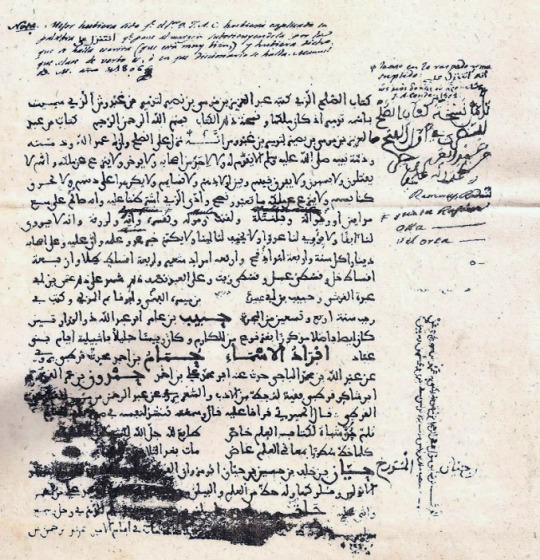
Btw this Arabic manuscript collection is the topic of one of the chapters of the book De Mayrit a Madrid (From Mayrit to Madrid), one of the books that is on the bookscans list, so if you want to know more about this topic, wait for when I share its bookscans.
And for ending with the Tudmir Pact, here's a map showing the cities included in the pact:

• Abd al-Aziz and Egilona
Note: The genealogical links listed below might not be 100% exact, because some data varies depending on the source. Sorry if it's a bit messy, genealogy is complicated (specially if Royal families are involved)
An interesting fact is that some sources point that Abd al-Aziz's mother was Umm bint Marwan ibn al-Hakam, a daughter of Caliph Marwan I, making Abd al-Aziz (born in 685) one of the grandsons of the 4th Umayyad Caliph of Damascus.
During the conquest, Abd al-Aziz and Egilona married in 713. Due to the name Umm'Asim Egilona is sometimes given, it's known that they had a son, although it's not known anything more about him, and they had a daughter too, Aïsha.

After the death of Musa ibn Nusayr in 715, Abd al-Aziz started to mistrust the new Caliph Suleyman, as its possible that the Caliph ordered to murder Musa.
The relationship between the Caliph and Abd al-Aziz was tense, since Abd al-Aziz's title of governor of Al Andalus was given by his father Musa ibn Nusayr, not by the Caliph, so Sulayman was afraid of a possible uprising and Abd al-Aziz turning Al Andalus into an independent territory. As it is possible that Egilona suggested Abd al-Aziz to crown himself and turn away from the caliphate, or at least that were the rumours, and that alleged conspiracy led to Sulayman sending Ziyad ibn Udhara to murder Abd al-Aziz in Seville in 716.
It is not known exactly when Egilona died, although is likely the year of her death is after 718. About their daughter Aïsha bint Abd al-Aziz, she eventually married Fortún ibn Qasi, governor of Zaragoza and the Ebro valley and head of the Banu Qasi, and had two sons Zahir and Musa ibn Fortun, the later married Oneka of Pamplona. They had two sons, Mutarrif and Musa ibn Musa, whom later in the book AL ANDALUS. Historical figures there will be a chapter about (the chapter Musa ben Musa ben Qasi, the third King of Spain). Musa ibn Musa's domains were occasionally independent from the Umayyad emirate of Córdoba since he and his descendants allied with either the emirate or with Christians like the future kingdom of Navarre, whose Royal family had blood ties with the Banu Qasi, some of them being:
- Eneko Aritza, Lord "King" of Pamplona, was Musa ibn Musa's brother, since Eneko was the son Oneka had with her first husband Eneko Semenoitz
- Asona Enekoitz, one of the daughters of Eneko Aritza, niece and wife of Musa ibn Musa. Their children were Lubb ibn Musa, Mutarrif ibn Musa, Fortún ibn Musa and Awriya bint Musa
- Belasquita Garcés of Pamplona, daughter of Eneko Aritza's son, García. She was Musa ibn Musa's daughter-in-law since he married Mutarrif ibn Musa ibn Musa.
- Fortún Garcés, son of Eneko Aritza's son García. Fortun married Awriya bint Lubb ibn Musa, daughter of Lubb ibn Musa and an Arab noblewoman Ayab al-Bilatiyya. Their children were Eneko, Aznar, Belasko, Lope and Oneka.
- Oneka Fortúnez, daughter of Fortún Garcés and Auria/Awriya bint Lubb. Oneka Fortúnez married twice, she firstly wed the Emir Abd Allah I of Córdoba, she was known as Durr (Pearl), their children being Muhammad, Zayd, al-Baha' and Fatima, Muhammad's son was the first Caliph of Córdoba, Abd al-Rahman III; then Oneka married her cousin Aznar Sánchez.
Descendants by MUHAMMAD
- Muhammad, son of Emir Abd Allah I of Córdoba and Oneka Fortúnez, he had Abd al-Rahman III with a Basque woman, Muzna.
- Abd al-Rahman III, 8th Emir and first Caliph of Córdoba. He had several wifes and concubines, and many children, but the one who succeeded him was al-Hakam II, one of the sons he had with one of his wifes, a Christian captive called Maryam.
- Al-Hakam II, 2nd Caliph of Córdoba, son of Abd al-Rahman III and Maryam. Al-Hakam was succeeded by Hisham II, a son he had with the concubine, Subh al-baskunsiyya, a Basque woman named Aurora, but then she took the name Subh.
- Hisham II, 3th Caliph of Córdoba, son of al-Hakam II of Córdoba and Subh. He firstly was overthrown by Muhammad II, and became Caliph again after the second rule of Muhammad ended.
-Muhammad II, 4th Caliph of Córdoba, son of Hisham, who was son of Abd al-Yabbar, one of Abd al-Rahman III's sons. He overthrew Hisham II, but Muhammad II was overthrown by Suleyman al-Mustaín, and Muhammad II started his second rule after he overthrew Suleyman. Muhammad II's sons were Abd al-Rahman IV and Hisham III.
- Suleyman, 5th Caliph of Córdoba, son al- Hakam, who was son of Suleyman, one of Abd al-Rahman III's sons. After Hisham II died, Suleyman's second rule started, but he was defeated and killed by the governor of Ceuta, Alí ibn Hamud al-Násir, who became the 6th Caliph of Córdoba and first Caliph of the Banu Hamud dinasty.
- Abd al-Rahman IV, 7th Caliph of Córdoba, son of Muhammad II. After Ali ibn Hamud was murdered, he was proclaimed Caliph, although it was después with Ali ibn Hamud's brother Al-Qásim, and after Abd al-Rahman IV died, Al-Qásim fully became the 8th Caliph of Córdoba.
- Abd al-Rahman V, 10th Caliph of Córdoba, brother of Muhammad II. After the second rule of Al-Cásim ended, he became Caliph, but he was murdered a year later. He was succeeded by his cousin Muhammad III.
- Muhammad III, 11th Caliph of Córdoba, son of Abd al-Rahman, who was son of Ubayd Al-lah, one of Abd al-Rahman III's sons. He had a daughter with the slave Amin'am, who was Wallada bint al-Mustakfi. Muhammad died, and Ali ibn Hamud's son, Yahya al-Muhtal returned.
- Hisham III, 12th Caliph of Córdoba, son of Muhammad II. He became Caliph when Yahya al-Muhtal was overthrown and his second rule ended. After some years, Hisham III was overthrown during a popular uprising, the Caliphate of Córdoba was abolished, so Hisham was the last Caliph of Córdoba, and the first period of Taifas began.
- Wallada bint al-Mustafki, the only child of Muhammad III, became a famous poetress. Wallada inherited her father's assets when he died and she opened her palace to the education of women from good families to women of low status and even slaves; poets and writers also attended. Among her students, Muhya bint al-Tayyani stands out, a poetress of very humble status. Wallada welcomed her into her palace, and it is said that they were lovers.
It is known that she embroidered her verses on her dresses, being the most well-known: "By Allah, I deserve any greatness/ and I proudly continue my path/ I gladly give my lover my cheek / and I give my kisses to whoever wants them"; and she did not veil on the street. Wallada participate in men's competitions, in one of them she met the poet Ibn Zaydún, with whom she had a passionate love story, as is it shown in several of their poems. Wallada had other lovers like Ibn Abdus, but she never married.
(Mental Note: I have to dedicate a post to Wallada's poetry someday)
Descendants by AZNÁR SANCHEZ
- Toda Aznárez, daughter of Oneka Fortúnez with her second husband Aznar Sánchez. Toda married Sancho I of Pamplona, a distant cousin and first official King of Pamplona. Their children were García I of Pamplona (married Countess Andregoto I of Aragon, their son was Sancho II of Pamplona), Urraca (married Ramiro II of Leon), Oneka (married Alfonso IV of León, their son was Ordoño IV), Sancha (married Ordoño II of León, their son was Sancho I) , Belasquita and Orbita (married al-Tawil, governor of Huesca).
- Sancho II of Pamplona, García I and Andregoto's son, married Urraca Fernández, daughter of Fernán González, Count of Castile. Among their children were García II of Pamplona and Urraca. Urraca married Al-Mansur, hayib of Caliph Hisham II of Córdoba, and she took the name Abda, and was the mother of Abd al-Rahman Sanŷul (or Sanchuelo), who became hayib of Hisham II after his brother ʿAbd al-Málik al-Muẓáffar (son of Al-Mansur and Al-Dalfāʾ) died. Abd al-Rahman Sanchuelo had a son, Abd al-Aziz ibn Ámir, who, after the of the Caliphate was splitted into Taifas, became Emir of the Taifa of Valencia. Abd al-Aziz was succeeded by his son Abd-al-Malik, but Abd-al-Malik was overthrown by Al-Mamún, Emir of the Taifa of Toledo.
- García II of Pamplona was succeeded by his son Sancho II of Pamplona, who married Muniadona of Castile, and they were parents of García III of Pamplona (ancestors of the Kingdom of Navarre) and Ferdinand I of Leon, who married Sancha of Leon, who was the great-great-grandaughter of Ramiro II of Leon (ancestors of the Crown of Castile and the Kingdom of Portugal, via their son Alfonso VI of Leon). Plus Sancho II of Pamplona had a son out of wedlock, Ramiro I of Aragon (ancestors of the Crown of Aragon)
#al andalus#historyblr#pact of tudmir#al andalus. historical figures#al andalus. personajes históricos#abd al-aziz ibn musa#abd al-aziz#teodomiro#tudmir#spanish history#al andalus history#book scans related#book scans#bookblr#egilona#ailo#queen egilona#umm'asim
5 notes
·
View notes
Text

VKM Ingeniería Estructural Almería
Somos un cluster. Le ponemos en contacto con los mejores profesionales adaptados para sus necesidades en Ingeniería Estructural en Almería
Visita nuestra web:
https://www.vkmingenieriaestructuralalmeria.es
Ofrecemos servicios en:
Abla, Abrucena, Adra, Albánchez, Alboloduy, Albox, Alcolea, Alcóntar, Alcudia de Monteagud, Alhabia, Alhama de Almería, Alicún, Almería, Almócita, Alsodux, Antas, Arboleas, Armuña de Almanzora, Bacares, Balanegra, Bayárcal, Bayarque, Bédar, Beires, Benahadux, Benitagla, Benizalón, Bentarique,, Berja, Canjáyar, Cantoria, Carboneras, Castro de Filabres, Chercos, Chirivel, Cóbdar, Cuevas de Almanzora, Dalías, Darrícal, El Ejido, Enix, Felix, Fiñana, Fines, Fondón, Gádor, Garrucha, Gérgal, Huécija, Huércal de Almería, Huércal-Overa, Íllar Instinción, La Mojonera, Laroya, Las Tres Villas, Laujar de Andarax, Líjar, Los Gallardos, Lubrín, Lucainena de las Torres, Lúcar, Macael, María, Mojácar, Nacimiento, Níjar, Ohanes, Olula de Castro, Olula del Río, Oria, Padules, Partaloa, Paterna del Río, Pechina, Pulpí, Purchena, Rágol, Rioja, Roquetas de Mar, Santa Cruz de Marchena, Santa Fe de Mondújar, Senés, Serón, Sierro, Somontín, Sorbas, Suflí, Tabernas, Taberno, Tahal, Terque, Tíjola, Turre, Turrillas, Uleila del Campo, Urrácal, Velefique, Vélez-Blanco, Vélez-Rubio, Vera, Viator, Vícar, Zurgena.
0 notes
Text

VKM Pulidos Almería
Somos un cluster. Le ponemos en contacto con los mejores profesionales expertos adaptados para sus necesidades en Pulidos, Abrillantados, Cristalizados, Diamantados, Vitrificados y Rebajes en Almería
Visita nuestra web:
https://www.vkmpulidosalmeria.es
Ofrecemos servicios en:
Abla, Abrucena, Adra, Albánchez, Alboloduy, Albox, Alcolea, Alcóntar, Alcudia de Monteagud, Alhabia, Alhama de Almería, Alicún, Almería, Almócita, Alsodux, Antas, Arboleas, Armuña de Almanzora, Bacares, Balanegra, Bayárcal, Bayarque, Bédar, Beires, Benahadux, Benitagla, Benizalón, Bentarique,, Berja, Canjáyar, Cantoria, Carboneras, Castro de Filabres, Chercos, Chirivel, Cóbdar, Cuevas de Almanzora, Dalías, Darrícal, El Ejido, Enix, Felix, Fiñana, Fines, Fondón, Gádor, Garrucha, Gérgal, Huécija, Huércal de Almería, Huércal-Overa, Íllar Instinción, La Mojonera, Laroya, Las Tres Villas, Laujar de Andarax, Líjar, Los Gallardos, Lubrín, Lucainena de las Torres, Lúcar, Macael, María, Mojácar, Nacimiento, Níjar, Ohanes, Olula de Castro, Olula del Río, Oria, Padules, Partaloa, Paterna del Río, Pechina, Pulpí, Purchena, Rágol, Rioja, Roquetas de Mar, Santa Cruz de Marchena, Santa Fe de Mondújar, Senés, Serón, Sierro, Somontín, Sorbas, Suflí, Tabernas, Taberno, Tahal, Terque, Tíjola, Turre, Turrillas, Uleila del Campo, Urrácal, Velefique, Vélez-Blanco, Vélez-Rubio, Vera, Viator, Vícar, Zurgena.
0 notes
